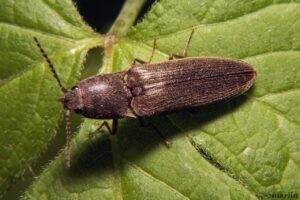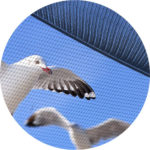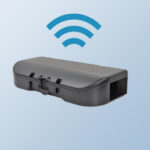Vap-X for Maintenance

Cardinal Vap-X has become a useful tool in the arsenal used to combat stored product pests, roaches, flies, and other occasional invaders. In recent years, RKE Environmental Services (RKE) clients choosing Vap-X for the purpose of maintaining low to 0 pressure from insects inside their food handling facilities. These clients have seen a successful reduction in overall insect pest captures since implementing a Vap-X maintenance program as prescribed by RKE in food warehouse and manufacturing settings. By having a maintenance program in place, the RKE teams can work with the facility’s respective leadership teams to determine and plan the best dates for this program to take place. By having this service proactively planned out, the goal is to alleviate the stress of unplanned issues that come with building fumigation or fogging.
Vap-X combines insecticide with an insect growth regulator (IGR). While the insecticide works to neutralize current insect pressure, the IGR leaves a residual to combat introduction of future generations of insects. Vap-X is delivered via a “RAS” or remote application system. These systems are strategically placed inside the facility to ensure equal delivery of the gas. Tubing connects the RAS system to the Vap-X canisters that are placed on the exterior of the building. Dispensing the gas in this manner provides an extra level of safety to the Specialist in charge of dispensing the gas as they remain in a safe and open-air environment.
Submitted by: Ross Heller
Regional Operations Manager
RK Environmental Services
The Click Beetle
Order: Coleoptera Family: Elateridae Scientific Name: Various

The Click Beetle name originates from the insect having the ability to click/snap as well as flip its’ body into the air when turned upside-down. This unusual clicking mechanism, which also allows it to avoid predation is the distinguishing trait of this insect. Since adults are attracted to light at night, it is considered a Nuisance Pest and also classified as an Occasional Invader. Within North America, there are approximately 900 species in distribution.
Adults can be colorful but typically are brown or black and without markings. They measure approximately 1/16” to 1 ¾” in length. The distinctive shape is elongated, slender, and somewhat flattened. A curved and moderately tapered shape can be found at the very end of the insect. Antennae are normally sawtooth, comb-like, and can be found close to the eyes. The arrangement of the appendages allows this beetle to produce the clicking sound. Adult Click Beetles live on tree, and shrub foliage as well as under decaying logs and loose bark. Food sources for adults included Aphids, leaves, nectar from plants, and pollen.
Click Beetles overwinter in the form of eggs, larvae, and adults. They go through a complete metamorphosis. Various species of this insect will complete their life cycle in one year and others may take two to five years to complete. Eggs are laid in a single layer within the soil at 1” to 6” in depth during the
Spring and/or Summer months. Mature larvae are about ½” to 1 ⅜” long and are bright yellow to brown in color. They possess a narrow shape. Legs have a clawlike appearance and are also extremely developed. The larvae, which are called wireworms are hardwired and saprophagous. The definition of saprophagous is an organism that feeds on decaying organic matter. This includes the roots and other underground parts of the grass, garden plants, flowers, and agricultural crops such as beans, cereals, corn, cotton, etc. Thus making this pest destructive and of economic concern.
The first step for control & elimination of the Click Beetle or any pest is proper identification. As part of an Integrated Pest Management (IPM) program, Insect Light Trap (ILT) units can be utilized indoors for the effective monitoring of flying insects. If found within the structure and contingent upon population levels, an industry-recommended vacuum can be utilized for removal. A vacuum is an essential tool for any IPM program. Viable pest entry points such as cracks, crevices, and gaps around the exterior of the structure should be sealed with durable material to effectively exclude these insects. Silicone sealant can be utilized for windows and door frames. If a gap is found at the base of the door then a new bottom door brush or seal may need to be installed. Reducing lights at night can deter Click Beetles. In situations where commercial lighting is utilized, the light bulbs can be switched to sodium vapor which is the least attractive to flying insects. To reduce population levels on the exterior of a structure, power spray applications can be performed with the use of an approved insecticide as well as by a licensed applicator(s). Interior applications are rarely performed or recommended for control.
Submitted by: Joe Romito, ACE
Sr. Food Safety Consultant
Comprehensive Food Safety, LLC














